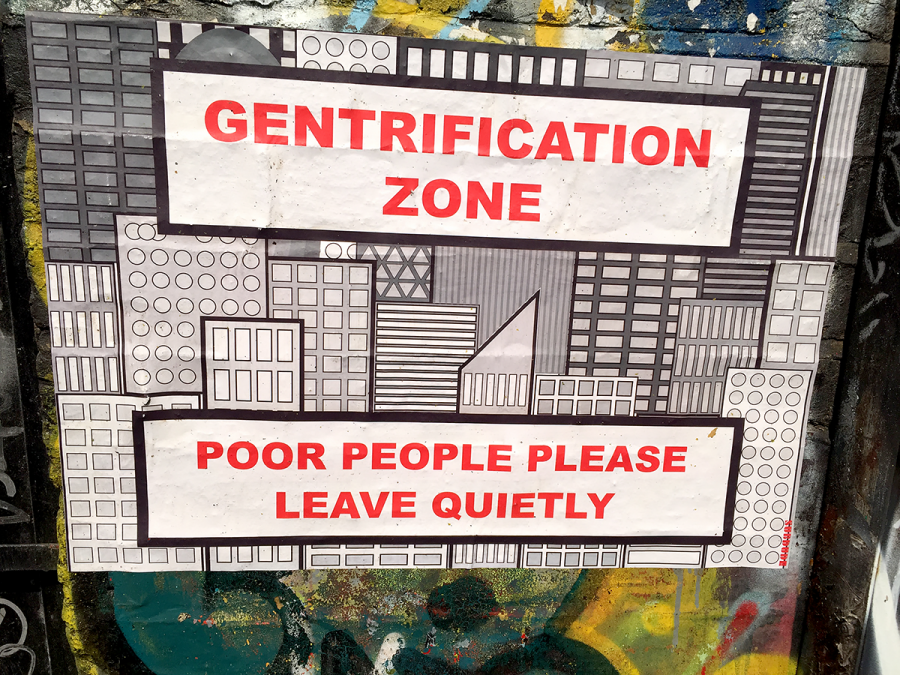Gentrification in Oakland on the rise
June 27, 2019
The gentrification of Oakland has had detrimental effects on the city and people who call it home. The culture, norms, diversity, and life they have grown up with or have become accustomed to are seemingly disappearing in front of their eyes.
With the decrease of affordable housing driving the loss of its cultural and racial diversity, Oakland in every aspect of the word is no longer what it used to be.
Oakland’s median cost of a 697 square foot apartment is $2,624, according to apartment finding website RENTcafé. If a minimum wage worker in Oakland is working roughly 40 hours per week he or she would be making roughly $490 before taxes, which averages to $1,960 a month before taxes.
Transportation, health insurance, food, childcare, and other necessities need to be paid for as well. As a result, Oakland workers who live in Oakland have a very hard time finding a place to call home that is within their price range.
The diversity of Oakland has subsequently been affected as the cost of living has risen. In 1990 African-Americans made up about 43.9 percent of Oakland’s population. In 2000, that number was 35.7 percent, and in 2010 African American’s only made up 28 percent of Oakland’s population according to the US Bureau of Labor Statistics. That’s nearly a 16 percent decrease in Oakland’s black community since 1990.
At the same time in 1990, white people made up 32.5 percent of the population, then declined to 31.3 percent in 2000 and increased to 34.5 percent in 2010. Over all that’s a six percent increase in Oakland’s white population.
For Oakland’s natives and long time residents, the culture and diversity they know to has started to disappear with its people.
Some argue that the term “gentrification” diminishes the financial investment that many new businesses have made in Oakland. New shops, new restaurants, new housing all would be great if they were not pushing out older businesses and displacing low-income residents.
Others argue that gentrification lowers crime, which studies have found to be untrue. Larceny and robbery in fact have risen in many gentrified neighborhoods, cities and towns across the United States reported The Washington Post.
There is also the argument that gentrification is a natural process, and that the revitalization of an area doesn’t always have to include the displacement of its original occupants.
But something else has grown from this new rush of gentrification: A broad-spectrum empathy between Oakland natives. It’s easy to spot who is from Oakland and who isn’t. This is a phenomenon I’ve witnessed first hand.
I hope in the coming years Oakland’s new residents as a whole can learn to appreciate the existing culture and people. In addition, help encourage affordable housing in new buildings and to respect that we love where we are from and are hurt by the loss of familiarity and comfort of what used to be.
















